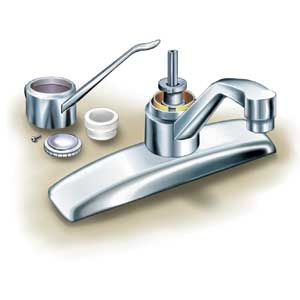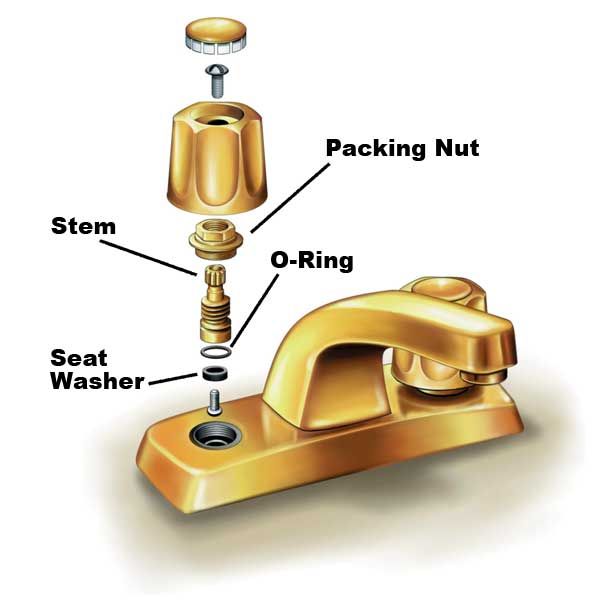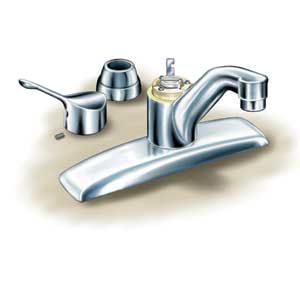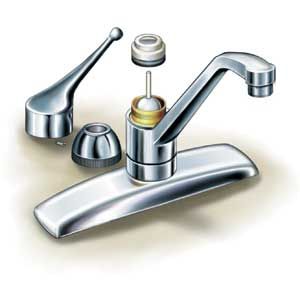A leaky faucet is more than just an annoyance—it’s a constant reminder of wasted water and money. Fortunately, fixing a dripping faucet is often a straightforward and inexpensive do-it-yourself project. This guide will walk you through identifying and repairing different leaky faucets, helping you restore peace to your kitchen and conserve water. Though initially daunting, anyone can take on this task with guidance and patience.
Common Causes of Faucet Leaks
Before diving into repairs, it’s important to understand what causes a faucet to drip. Most leaks occur due to worn-out components within the faucet mechanism. These can include:
- Corroded valve seats: Water’s constant pressure and flow can cause corrosion, often seen in older faucets and those with a high mineral content in the water.
- Deteriorated rubber washers or seals: Over time, these may harden and lose effectiveness, leading to leaks. Regular checkups can help minimize sudden failures.
- Loose or damaged O-rings: These provide the waterproof seal needed in various faucet parts. They can weaken or crack from regular use.
- Worn-out cartridges: Central to many modern faucets, these may wear down consistently, resulting in a steady leak or drip.
Identifying the specific cause will help you determine the best course of action for repairs. Addressing these issues promptly can prevent more significant problems and extend the life of your faucet.
Types of Kitchen Faucets
There are four main types of kitchen faucets, each with its own repair process:
- Ball-type: Incorporate a ball inside the faucet body to control water flow.
- Cartridge: Distinguished by their simple mechanism, making them easier to repair.
- Ceramic disk: Known for durability and requiring minimal maintenance.
- Compression: Often found in older homes, featuring separate hot and cold handles.
Understanding which type of faucet you have is necessary for effective repairs. Each type demands a specific approach, and recognizing these differences will empower you to tackle the job more confidently.
Preparing for Faucet Repair
Before you begin any repair work, take these preparatory steps:
- Shut off the water supply valves under the sink to prevent accidental spills.
- Cover the drain with a rag or stopper to prevent losing small parts during the disassembly.
- Arrange a clean workspace to lay out faucet components in order of removal.
- Collect necessary tools, making sure they’re in good condition—adjustable wrenches, screwdrivers, and pliers.
- Have replacement parts on hand, such as washers, O-rings, or cartridges, so you can seamlessly swap them without delay.
Taking these precautions will make your repair process smoother and more efficient. A well-prepared workspace also minimizes the risk of damaging the faucet or misplacing integral parts during repair.
Faucet Cartridge

How To Fix a Leaky Cartridge Faucet
- Pry off the decorative cap on the handle, remove the handle screw, tilt the handle back, and pull it off.
- If there’s a threaded retaining clip holding the cartridge in place, use needle-nose pliers to remove it, then pull the cartridge straight up.
- Remove the spout and cut off the old O-rings using a utility knife. Coat the new O-rings with nontoxic, heat-proof plumber’s grease.
- To replace the entire cartridge, match the length of the old cartridge with the length of the replacement. Also, match the stem end where the handle attaches.
Compression Faucet

How To Fix a Leaky Compression Faucet
- Most leaky compression faucets need new seat washers. Use a small slotted screwdriver or utility knife to pry off the decorative cap on the handle, exposing the attachment screws.
- Use a screwdriver to remove the handle screw, then pull off the handle.
- Use a crescent wrench to unscrew the packing nut and an adjustable wrench to loosen the stem from the faucet body.
- Unscrew the rubber washer from the bottom end of the stem to remove and replace the seat washer.
- Coat the washers with nontoxic, heat-proof plumber’s grease.
- Pop the stem out of the packing nut and replace the O-ring, the culprit for leaky handles. O-rings range in size from 3/8 to 5/8 inch, so it’s crucial to match the exact size of your faucet. Coat the new O-ring with plumber’s grease.
- The washer sits in a round, recessed disk called a retainer. If the original retainer is damaged, grind it flush and install a replacement retainer ring. If your faucet continues to leak, the seat may be pitted.
- Remove the stem and sand the top end of the seat with emery cloth to smooth it out.
- If you can’t repair the original seat, replace it with a new one.
Ceramic Disk Faucet

How To Fix a Leaky Ceramic Disk Faucet
- Push the handle back to access the set screw. Remove the screw and lift off the handle.
- Remove the escutcheon cap, unscrew the disk cylinder mounting screws, and lift out the cylinder.
- With a blunt screwdriver, lift out the neoprene seals from the cylinder. If the seals are damaged, replace them.
- Use distilled white vinegar and a soft scouring pad to clean the cylinder openings, then rinse them thoroughly.
- Replace the seals and reassemble the faucet.
- Move the handle to the “on” position and turn the water back on slowly—the force of the returning water can fracture the ceramic disk.
- If you’re replacing the entire cylinder (usually not necessary), set it in place and secure it with the new mounting screws.
Ball-Type Faucet

How To Fix a Leaky Faucet Ball-Type
This type of faucet contains a lot of parts, which often makes it difficult to find the cause of the leak. You can avoid the aggravation by buying a replacement kit and putting in all new parts.
- Use a pocketknife to pry off the small index cover from the side of the faucet and reveal the hex-head screw.
- Loosen the screw with a hex-key wrench and pull off the faucet handle.
- Use adjustable pliers to remove the cap and collar.
- Using the special tool included in the faucet-repair kit, loosen the faucet cam and lift it out, along with the cam washer and the rotating ball.
- Reach into the faucet body with needle-nose pliers and remove the rubber seats and springs.
- Slip a new spring and rubber seat onto the tip of a pencil and lower it down into the faucet.
- Repeat to install the second seat and spring.
- Reinstall the stainless steel ball, making sure to align its keyway with the corresponding tab inside the faucet body.
- On top of the stainless steel ball, install a new rubber gasket and cam cap.
- Align the keyway on the cap with the corresponding slot.
- Hand-tighten the top cap assembly back onto the faucet.
- Use a spanner wrench to tighten the nut to provide the proper tension against the stainless steel ball.
Tips for Successful Faucet Repair
To verify your faucet repair is successful and long-lasting, keep these tips in mind:
- Apply plumber’s grease to O-rings and moving parts for smooth operation, which reduces wear over time.
- Avoid overtightening screws and nuts to prevent damage to the faucet or potential future leaks.
- Clean all components thoroughly before reassembly to remove any dirt that could impede function.
- For optimal results, use the correct size and type of replacement parts tailored to your faucet model.
- Run water through the repaired faucet for several minutes after repair to check for persistent leaks or drips.
Adhering to these guidelines will enhance repair quality and keep it sustainable and leak-free.
When To Call a Professional for Faucet Repair
While many faucet repairs are do-it-yourself-friendly, some situations may require professional assistance, including the following.
- Dealing with intricate plumbing arrangements may require specialized knowledge.
- If you encounter extensive or irreparable damage to the faucet body.
- If you’re uncomfortable working with plumbing or lack the necessary tools for the job.
- When repairs don’t resolve the leak or create additional complications, it’s advisable to consult a professional.
Their expertise can further provide insights into maintaining faucet health and preventing future issues.
Looking for help with repairs around your home? A home warranty may help. Check out these in-depth guides from the This Old House Reviews Team:
